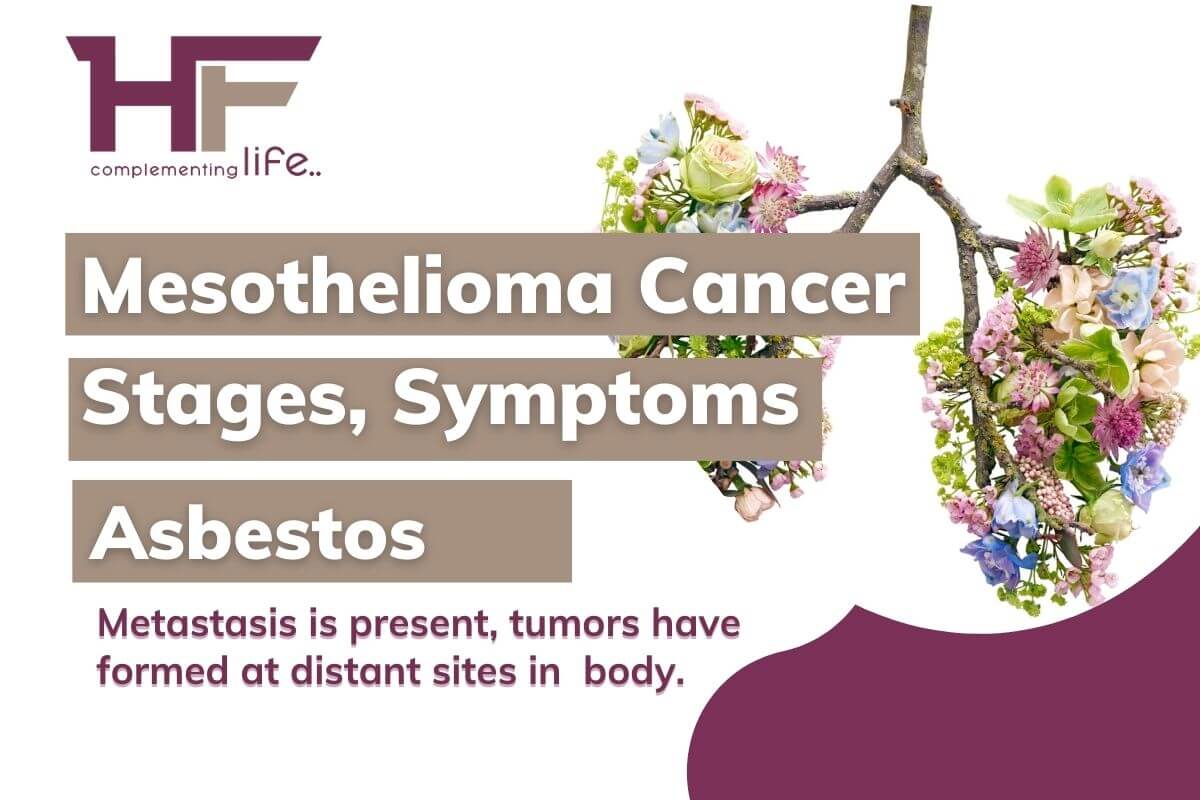Mesotheliomas are a type of cancer that occurs in the thin layer of tissue that covers the majority of internal organs like the lungs, stomach, heart, and other organs. Malignant mesotheliomas occur when the DNA in cells is damaged.
DNA is the chemical in each of our cells that make up our genes- The instructions for how our cells grow, divide into new cells and die.
Changes in these genes may cause cells to grow out of control, which can lead to cancer.
Researchers have found several factors that increase the risk of mesothelioma. One of them is Asbestos.
CContents
What Is Asbestos?
Asbestos is the name given to a group of naturally occurring fibrous minerals that are resistant to heat and corrosion. Because of these properties of asbestos, It has been used in commercial products such as-
- Insulation
- Fireproofing materials
- Automotive brakes and wallboard materials.
Now the question is how are people exposed to asbestos?
If products containing asbestos are disturbed, tiny asbestos fibers are released into the air. When asbestos fibers are released and breathed in accidentally, they may get trapped in the lungs and remain there for a long time. Overtime accumulated asbestos fiber can cause inflammation and scarring, which can affect breathing and sometimes leads to serious health problem.
Low levels of asbestos fiber are present in the air, water, and soil. The heaviest exposure today tends to occur in the construction industry and ship repair, particularly during the removal of asbestos-containing materials due to renovation, repairs, or demolition. Workers may also be exposed during the manufacturing of asbestos-containing products, such as textiles, friction products, insulation, and other building material. Mesotheliomas are the most common form of cancer associated with asbestos exposure, although the disease is relatively rare.

Asbestos was also used to insulate many older homes, as well as commercial and public buildings around the country including schools. Because these particles are contained within the building material, they are not likely to find in air in large numbers.
The risk of developing malignant mesotheliomas is loosely related to how much asbestos a person is exposed to how long exposure lasts. People are exposed at an early age, for a long time to develop this cancer.
Other factors
such as a person’s genes or having radiation treatments in the past, may make them more likely to develop malignant mesothelioma when exposed to asbestos.
SV40 Virus
Some studies have raised the possibility that infection with simian virus 40 might increase the risk of developing malignant mesotheliomas.
Factors involved risk of mesotheliomas
Age
The risk of mesotheliomas increases with age.
Gender
Mesotheliomas are common in men because they are exposed to certain environments at the workplace.
Gene Changes

A mutation or change in the gene called BAP1 can be passed in families and has been linked to malignant mesotheliomas.
Research Work
Asbestos has been classified as a human carcinogen by the U.S. Department of Health and Human Services(HHS). THE U.S. environmental protection agency(EPA) and the International Agency for Research on Cancer(IARC).
According to IARC, there is sufficient evidence that asbestos cause mesotheliomas, and cancer of the lung, larynx, and ovary. There is limited evidence that asbestos exposure is linked to an increased risk of cancers of the stomach, pharynx, and colorectum.
General Symptoms Of Asbestosis
- An inflammatory condition affecting the lungs.
- Causes shortness of breath, coughing, and permanent lung damage.
- Non-malignant lung and
- Pleural plaques
- Pleural thickening and
- Benign pleural effusions
About 8 out 0f 10 people with mesothelioma have been exposed to asbestos. When asbestos fibers are breathed in, they travel to the ends of small air passages and reach the pleura, where they cause inflammation and scarring. This may lead to damage to the cell's DNA and cause changes that result in uncontrolled cell growth. If swallowed, these fibers can reach the abdominal lining.
Symptoms
Signs and symptoms of mesotheliomas vary depending on where cancer occurs:
- Weight loss
- Fatigue
- Problems with blood clotting.
- Fever
- Night sweats
- Decreased appetite
Pleural mesothelioma
Which affects the tissue that surrounds the lungs, causes signs and symptoms that may include:
- Chest pain
- Painful coughing
- Shortness of breath
- Unusual lumps of tissue under the skin on the chest
- Unexplained weight loss.
- Nausea
Peritoneal mesothelioma
which occurs in tissue in the abdomen, causes signs and symptoms that may include:

- Abdominal pain
- Abdominal swelling
- Nausea
- Unexplained weight loss
Frequently Asked Questions
Is mesothelioma always fatal?
Malignant mesothelioma is considered an aggressive and fatal disease. Most mesothelioma patients only survive approximately 12 months after diagnosis. There is no cure for this cancer, but with treatment, patients have extended their life expectancies well beyond their initial prognosis.
Is all mesothelioma malignant?
Mesothelioma is a malignant tumor that is caused by inhaled asbestos fibers and forms in the lining of the lungs, abdomen, or heart. Symptoms can include shortness of breath and chest pain.
Is mesothelioma is painful like death?
In some cases, mesothelioma is a painful death, although there are options to help those with this diagnosis obtain relief and peace in their final days. Chest pain and pain while breathing are often the symptoms that drive those with mesothelioma to report their symptoms to their doctors.
How quickly does peritoneal mesothelioma spread?
Peritoneal mesothelioma symptoms can take 10 – 50 years to appear after an individual inhales or ingests asbestos fibers. The fibers become lodged in the peritoneum, the lining of the abdomen, which leads to irritation and scar-tissue buildup. These damaged cells can develop into tumors and cause symptoms.
What are the end stages of mesothelioma?
- Shortness of breath (dyspnea)
- Pain and tightness in the chest
- Night sweats and fever
- Difficulty swallowing (dysphagia)
- Coughing up blood (hemoptysis)
- Fluid buildup in the chest or abdomen
- Abdominal pain
- Fatigue
- Severe weight loss or anorexia (lack of appetite)
- A general feeling of discomfort (malaise)
What are the 4 stages of mesothelioma?
Stage 1: Early tumor growth occurs along the mesothelial lining of one lung.
Stage 2: Cancer has spread to nearby lymph nodes.
Stage 3: Tumors have invaded deeper tissues in nearby organs and distant lymph nodes.
Stage 4: Metastasis is present, and tumors have formed at distant sites in the body.
Why is mesothelioma so rare?
Another reason why mesothelioma is so rare is due to its latency period or the time between exposure and the appearance of symptoms.
On average, this disease has a range of latency between 13-70 years after inhaling or ingesting asbestos. It is a rare occurrence for its side effects to appear 10 or 20 years after exposure.












Comments